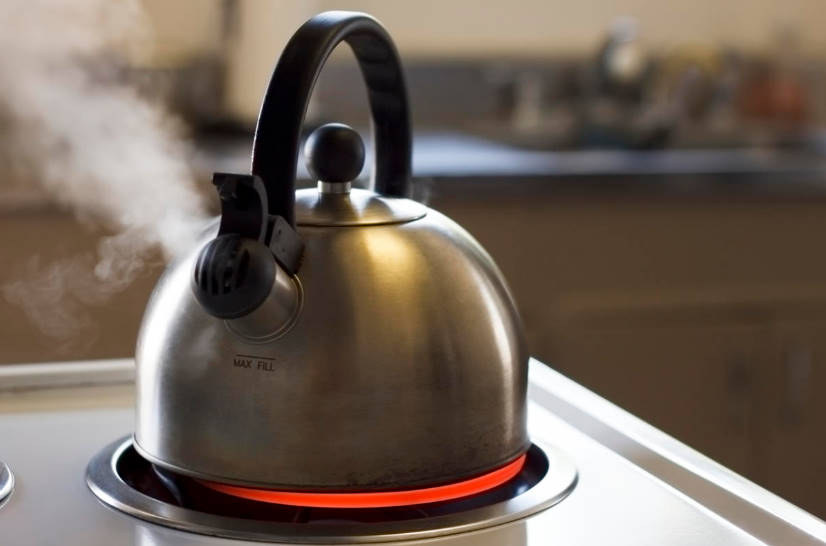Today we will talk a bit about burns. The stove in the bath, the boiling water in the electric kettle, the steam in the pot — there are many potential sources of burns around us, and each of us should know how to provide first aid.
Burn is skin damage due to high temperatures, electricity, chemicals or radiation. The problem, which is often found in everyday life and can cause serious trouble.
Important! The right help is especially important at the first time after the burn.
What are burns
Depending on the cause, doctors distinguish thermal, chemical, electrical and radiation (radiation) burns. Most often in everyday life we are dealing with thermal burns — damage caused by high temperature: boiling water, flame, steam.
What a thermal burn looks like
Thermal burns of the skin can appear as redness or skin damage. Often we see the appearance of bubbles or damage to the skin. Deep thermal burn can occur in the form of brown bubbles or charred skin.
What to do if you get a chemical burn
Such a burn occurs when chemicals containing acids or alkalis get on the skin. The most commonly used substances are household chemicals. You can get burned with insecticides when working in the garden, a substance to remove lime plaque or rust.
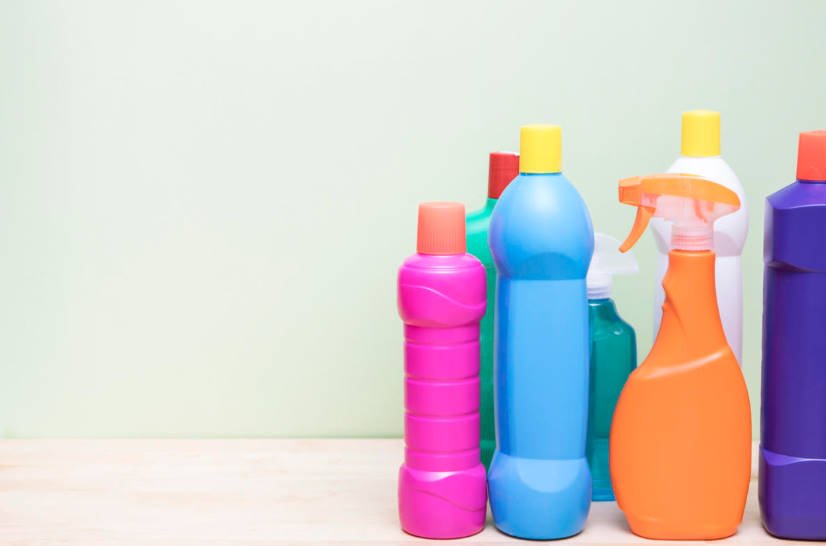
Some household chemicals can cause burns
When providing first aid should take into account the nature of the substance that you are burned. When chemical burns means containing acid to reduce damage, use slightly alkaline solutions, such as household soda.
What burns can be dangerous
In order to determine how dangerous a burn, you should pay attention to three circumstances:
- localization of burn;
- burnt skin area;
- depth or degree of burn.
What are the degree of burn
It is customary to distinguish four degrees of burns.
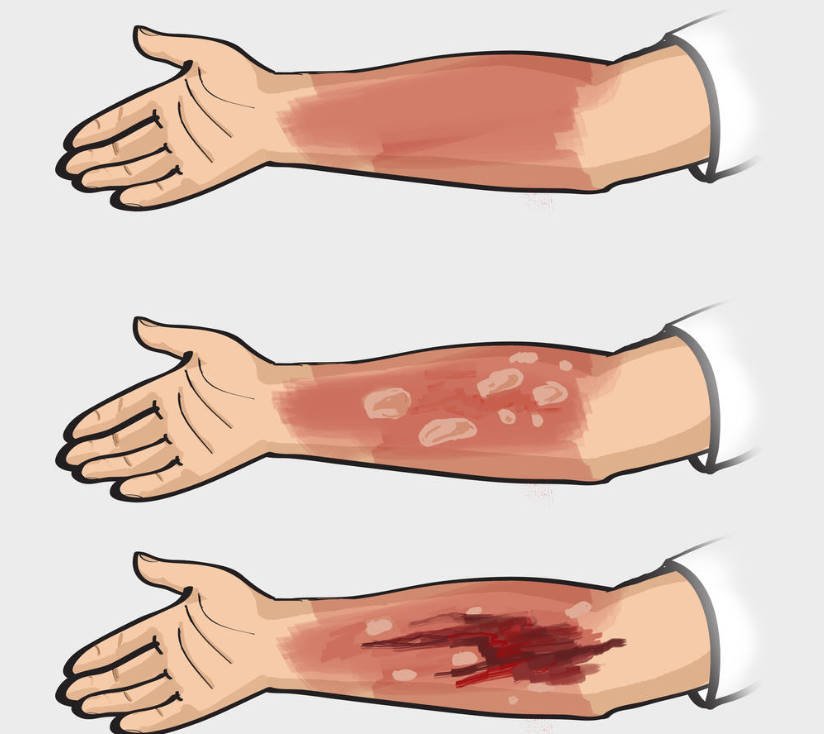
Degree of damage to the skin in case of burn
- First-degree
The burn surface is bright red and slightly prone to swelling. Such burns capture only the top layer of the skin, which is called the epidermis. Superficial burns are alone for 3-5 days on the skin after they usually do not remain visible track.
- Second degree
The burn is deeper, but still within the upper layer of the skin. With burns of the second degree on the background of a bright red surface there are bubbles with a transparent or slightly cloudy content. If the burn surface is covered with such bubbles, they should not be pierced with improvised means. If damage to the bubble can not be avoided, treat the surface and make a hole with a sterile needle. Remember that if the bubble is damaged, the burn may become infected. An infected burn does not heal for a long time and usually requires medical care.
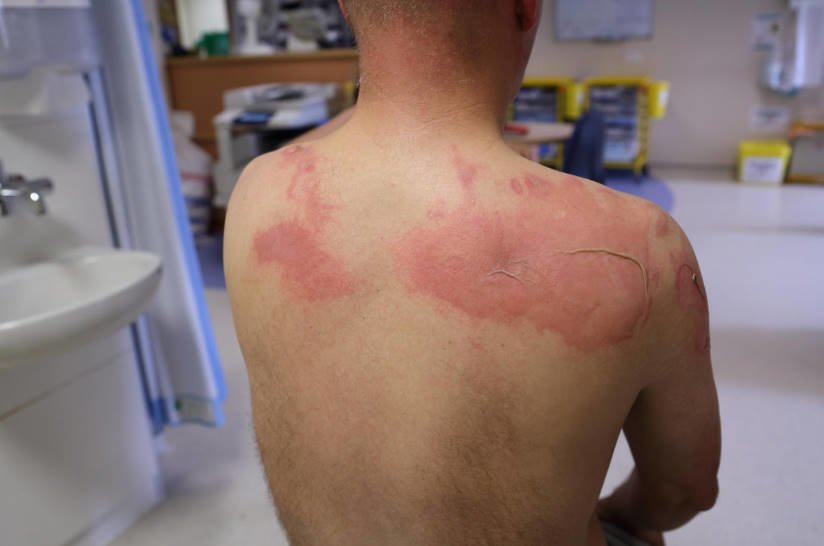
Second degree burn usually heals within 1-2 weeks
- Third degree
These burns are divided into 3A and 3B categories. They penetrate into the deep layers of the skin, with a burn of 3A degree affects part of the dermis, AND 3b penetrates the entire thickness. After a third degree burn, a dark brown or black scab may form. Perhaps the appearance of the bubbles with the contents of the dark brown color.
- Fourth degree
Heaviest. All layers of skin, muscles, bones are charred. Burns 3B and 4 degree considered deep. Full recovery of the skin after them is impossible, instead of the dead skin tissues, a scar is formed.
It is important to distinguish superficial from deep burns is possible by color or bubbles. If you see black, charred skin, dark brown scab or bubbles of brown color-before you a deep burn.
How to estimate burn area
If you estimate the depth of the burn you can by its appearance, how to estimate the area of the burn? The easiest way to determine the percentage of burnt surface of the skin — usually the palms. It is known that the area of the palm of an adult or a child is approximately 1 percent of the surface of his skin.
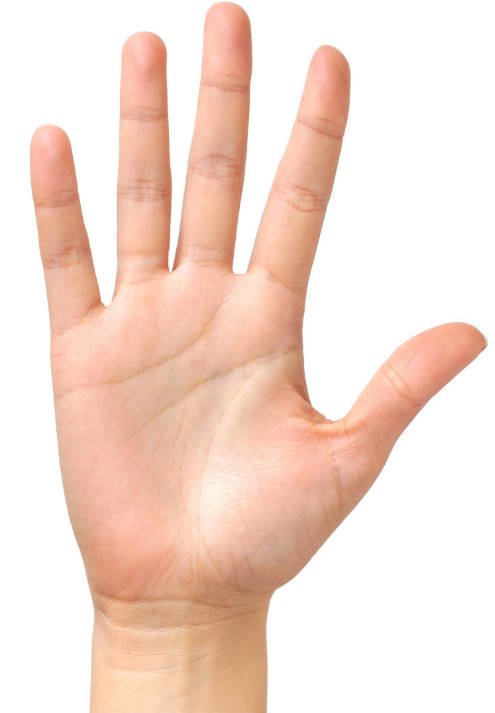
Palm rule: palm area = 1% of body surface
The second way to determine the area of burns – the rule of the nines:
- 9% head+neck
- 9% of the surface of the hand (the surface of the leg 2 times more = 18%)
- 18% the anterior surface of the trunk
- 18% back of torso
- 1% crotch.
First aid for thermal burns
Assistance should be provided as quickly as possible, because it affects the depth of the lesion. The main activities include:
- Cooling of the burn surface with water of room temperature (in case of burn no more than 20% of the body surface). It is believed that this prevents the penetration of thermal energy into the deep layers of the skin. Do not use very cold, icy water.
- Pain relief can.
- Treatment of the burn surface with a shallow lesion is carried out with an antiseptic. Do not use liquids containing alcohol.
- Antihistamines will help relieve swelling.
If the burn occupies more than 2% of the body surface or is deep, after first aid, cover the burn surface with a sterile cloth (for example, from a first-aid kit) and contact the emergency room.
Important! If you have extensive burns — 10% of the skin surface and more — call an ambulance.

Call an ambulance
Special danger is posed by:
- surface burns, occupying 10% of the skin and more, in children under 5 years-more than 5% of the skin surface;
- burns in children before the first year of life;
- deep burns corresponding to 3b and 4 degrees;
- burns on the face, neck, scalp;
- eye burns;
- burns to the esophagus, perineum and internal organs.
Consider what to do when burns on the face, neck, eye and esophagus damage.
Face and neck burns
Burns to the face and neck can be double dangerous. The skin of the face contains a large number of pain receptors, and even with a small burn, a shock condition may occur.
The skin on the face and neck is thin and delicate. The burn on it is formed quickly and penetrates deeply. After burns of the face often left scars. If you burned your face, you should contact your doctor as soon as possible. Can be treated with dexpanthenol, allantoin or aloe. When delivering the victim to the doctor, cover the burn surface with a cloth.
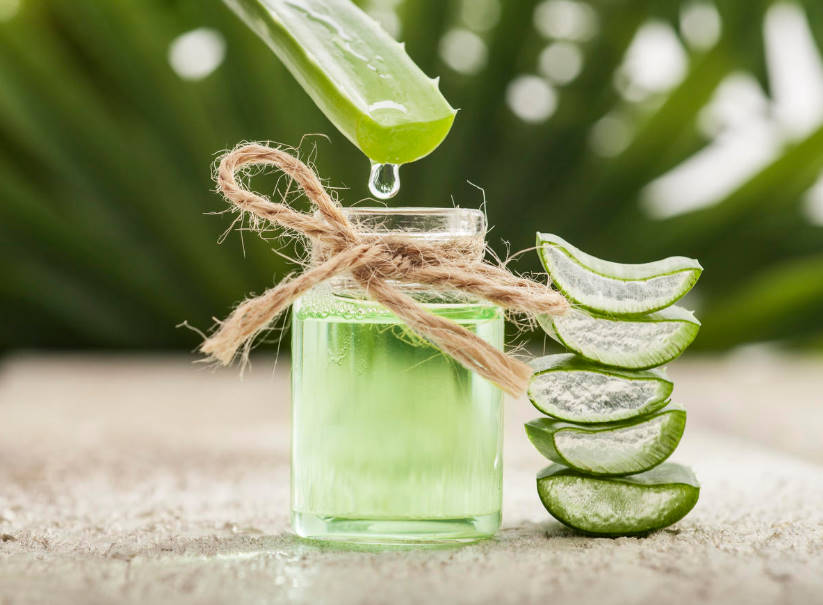
It is possible to treat the skin with a remedy containing aloe
Eye burn
Burns to the eyes requires immediate first aid. The eye should be washed with plenty of water at room temperature, after which you can drip eye drops with antiseptic and anesthetic or use antimicrobial eye ointment. The victim with an eye burn should be immediately taken to the hospital.
Burn of the esophagus and internal organs
Most often burns of the esophagus and internal organs occur when chemical liquids are swallowed. Symptoms of burn esophagus-burning pain in the mouth and behind the sternum. Can be the excessive secretion of saliva, vomiting. If you suspect a burn of the esophagus, you must immediately contact a medical institution.
Burns of the respiratory tract
Burns of the respiratory system aggravate the condition of the victim and can be life-threatening. The damage may affect the upper and lower respiratory tract and is sometimes accompanied by carbon monoxide poisoning. In case of burns of the respiratory system, it is important to avoid dehydration. The victim is taken out to fresh air, give a large amount of water to drink.
Burns in children
The most common cause of burns in children under 6 years — boiling water. A mug left on the edge of the table, or a kettle that was pulled by a wire, can cause misfortune.
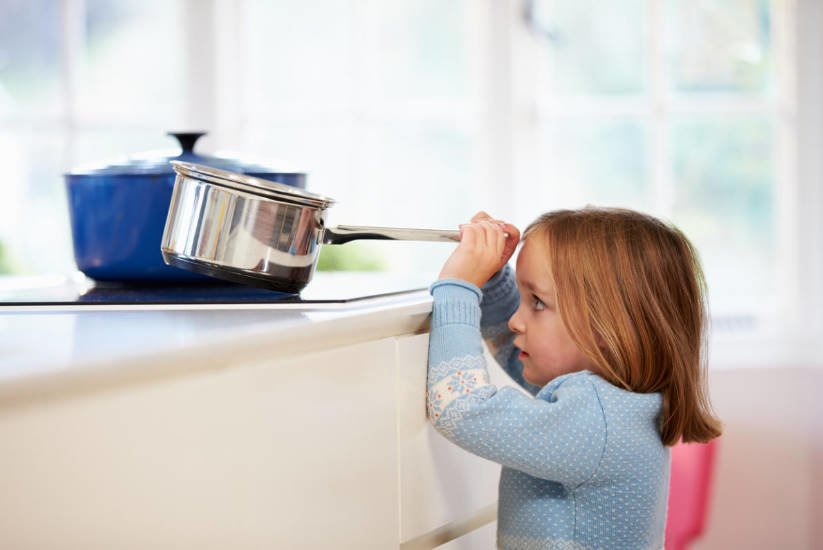
Left on the stove pan with boiling water can cause misfortune
If the child is burned with boiling water, the first thing to do is to rip off his clothes and cool with water at room temperature place of burn. We need to act quickly. After treatment, cover the damaged surface with a sterile cloth.
You cannot lubricate the burned surface baby cream, fats! The main reason is the formation of the film and the violation of heat transfer.
As we already know, in addition to thermal, there are chemical and electrical burns.
What not to do in case of burn
Providing first aid for burns, it should be remembered that some things can not be done categorically.
- Use fat
Do not grease burns with animal fat, sunflower or other vegetable oil, oil tinctures and the like. These means form a film on the surface, which prevents the heat exchange. When using the oil in the first minutes of the burn will be deeper.
- To tear off the stuck clothes
If you burn with flame, do not try to remove or tear off the stuck garments — it is better to leave them in place and contact the medical center. If the clothes are burnt, you can carefully trim parts of them without separating them from the skin.
- Open bubbles at hand
It is not recommended to specially open bubbles in case of burning with a nail or pierce them with improvised means. It promotes the penetration of infection. If the bubble is accidentally damaged, it is recommended to treat the wound with an antiseptic. Carefully open the bubble can be sterile needle after skin treatment.
- To use the patch
You can not seal the burns with an ordinary plaster.
Folk recipes for burns
There are quite a lot of folk methods that are recommended for burns. The opinions of doctors on this issue often differ due to lack of practice. Let’s look at which of the popular methods can be used and which are not worth it.
Can the surface of the burn be treated with raw eggs?
Official medicine does not particularly recommend the use of such improvised means. If there are no drugs nearby, you can lubricate the burn 1 or 2 degrees with egg protein, not letting it dry for half an hour. This method is tested repeatedly on their own experience – with surface burns, it gives a uniquely positive effect.
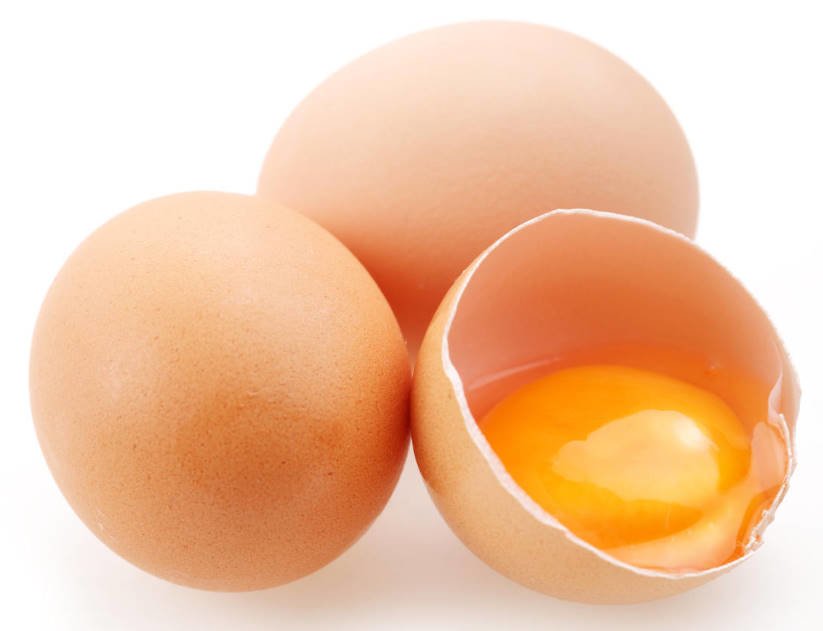
Can I use an egg for burns?
Frequently the recipe: egg yolk+protein mixed in equal proportions to the formation of foam and this mixture to treat damaged skin. The egg can be treated with a prolonged burn for better regeneration.
Would it be better if you put the burned place under the water?
Here the opinions of doctors and emergency medical teams disagree. Many manuals clearly say: cooling the burn with water. But! All mentioned water is at room temperature, in the absence of deep skin damage.
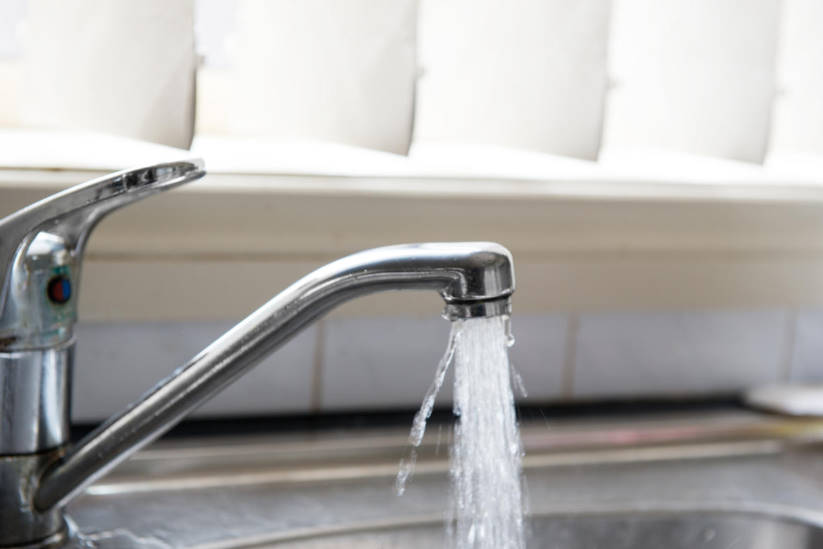
Will water help?
If the area and depth of the burn is small, it should not be substituted under cold water. Sharp temperature contrast can cause more tissue damage. Relief from such a procedure is often temporary. It is recommended to cool the water at room temperature in case of a burn of a significant surface of the skin.
What happens if you put the potatoes on the burn?
Apply raw potatoes to the place of burn can be, if the burn is shallow. Before that, be sure to wash and clean the vegetable. If you make the potatoes greasy, easy to cause infection. Potato relieves burning and pain, the skin feels a pleasant coolness. But in terms of regeneration, the effect of potatoes is not very great.
Honey and burns
Burns can be smeared with honey, when they have already begun to tighten, in order to prevent scar formation. For the same purpose, you can use specialized ointments.
From medicinal plants for the treatment of burns and their effects can be used aloe juice, calendula.
These are the rules of first aid for domestic burns. Maybe they are too simple, but I hope they will help to Orient and help the victim in time.
